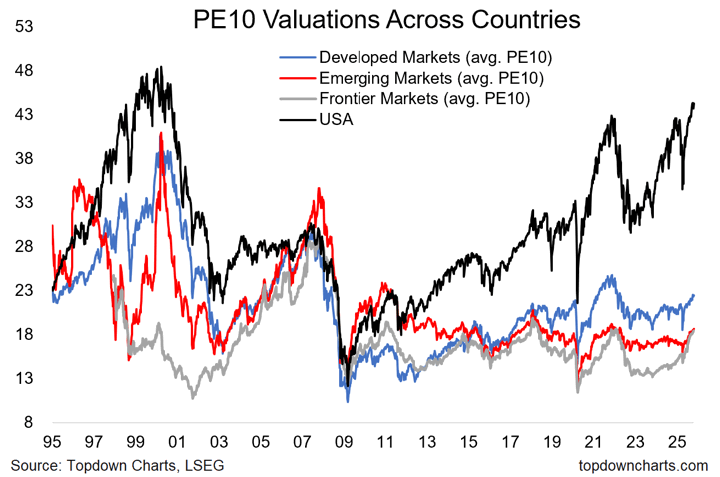What do Visa, Facebook, Hyundai and Ralph Lauren have in common?
They’ve all placed a stake in the new universe of virtual worlds known as the metaverse.
Forecast to value at nearly $800 billion by 2024, the global metaverse market is a mega trend we should all follow.
From crypto to gaming and fashion to mobility, the growing popularity of the metaverse is taking shape.
Jen-Hsun “Jensen” Huang, president, CEO and co-founder of semiconductor device maker Nvidia Co., shared: “the economy in the metaverse … will be larger than the economy in the physical world.”
Paul Mampilly feels the same way. He predicted on June 15, 2021:
…the metaverse has extraordinary potential to be an extraordinary investment idea.
And he has one question for you.
Keep reading to see if you’re up to the challenge.
Make Way for the Metaverse
“Meta” means transcendent or beyond and “universe” is all space and everything in it.
The metaverse is a virtual-reality world where users can interact with each other in a 3D-computer generated environment.
Medium describes it best:
A metaverse is a shared virtual reality space. In these spaces, individuals can interact with one another in digital constructs (environments) and represent themselves with digital avatars. Like the internet, the metaverse will always stay active and live.
It will never turn off, even when you are not interacting with it.
Remember “The Matrix” [movie]? The metaverse is similar in concept where we interact with one another in a computer-based reality. In these spaces, individuals are free to express themselves in many different ways. This is characteristic in modern gaming where players are able to customize their avatar’s appearance.
Users will be free to express themselves however they see fit.
Digital economies will exist and thrive in the metaverse. As in the physical world, users will be able to purchase status symbols or spend their time completing tasks to acquire assets.
The metaverse is a continuation of social networking in virtual environments and is arguably the next iteration of what the internet will be.
That means the investment potential is literally out of this world!
The global metaverse market is currently valued at $479 billion. It’s on track to rocket up to $783 billion by 2024. That’s a compound annual growth rate of 13.1%.
Four New Players of the Metaverse
As I mentioned above, the metaverse just got four new players ready to capitalize on this America 2.0 opportunity.
Metaverse Player No. 1: Visa.
Visa has entered the metaverse with its first non-fungible token (NFT) purchase.
As Wikipedia simply puts it, an NFT is “a unit of data stored on a digital ledger, called a blockchain, that certifies a digital asset to be unique and therefore not interchangeable (like currency or bitcoin).
NFTs can be used to represent items such as photos, videos, audio files and of course digital artwork.”
So, the best way to think of NFTs is to see them as a one-of-a-kind digital asset that cannot be replaced with something else.
Last month, Visa spent $150,000 to purchase a one-of-a-kind piece of virtual pixelated art. These types of NFTs are viewed as digital assets that will appreciate over time.
Metaverse Player No. 2: Facebook.
Meanwhile, earlier this summer, Facebook CEO Mark Zuckerberg announced his plan to “build a more maximalist version of Facebook, spanning social presence, office work, and entertainment,” all with the goal of “bring[ing] the metaverse to life.”
Metaverse Player No. 3: Hyundai.
Additionally, Hyundai will be the first automaker to launch into the metaverse through a popular gaming platform among younger generations.
Within this virtual world, gamers will be able to interact, play and test drive an assortment Hyundai’s virtual products, from cars to robots to urban air mobility transportation devices.
Per Marketing Dive, “Hyundai is aiming to familiarize young consumers with these offerings in the hopes that it can forge long-lasting customer relationships.”
And it’s only the beginning of a long-term relationship with the metaverse for Hyundai.
Thomas Schemera, global CMO, executive vice president and head of the customer experience division at Hyundai Motor, states that the automaker plans to “continue to use the metaverse platform for communication of Hyundai Motor’s new vehicles and future mobility solutions, so please keep an eye on our upcoming content.”
Metaverse Player No. 4: Ralph Lauren.
Lastly, fashion company, Ralph Lauren, recently announced an exclusive partnership with metaverse 3D-avatar platform ZEPETO.
Together the companies plan to sell a digital fashion collection and themed virtual environments.
Ralph Lauren’s apparel will be reimagined for the digital world of ZEPETO. Users will be able to style their 3D avatars with exclusive Ralph Lauren products.
Alice Delahunt, the chief digital officer at Ralph Lauren, framed this new venture like so:
Ralph Lauren’s new partnership with ZEPETO further demonstrates our belief that innovating in virtual worlds is essential to engaging the next generation of consumers. Ralph Lauren has always embraced new environments, and we’re excited to push the boundaries in this emerging arena.
Making our product available to purchase and wear digitally and allowing consumers to experience the brand in immersive new ways is the next frontier.
There you have it.
We can enter the metaverse to trade artwork, socialize with friends, game and try out new fashions.
With it growing into so many sectors as one of our exciting new mega trends, there’s plenty of room for you to profit.
Metaverse 10X Mega Trade
Paul recently revealed his top metaverse mega trade in his Profits Unlimited research service.
In our minimum one to three-year hold time, he’s predicting triple-digit gains. For the Strong Hands, he’s calling for 10X gains over seven to ten years.
By the end of the issue, he only had one thing to say: “Are you in or are you out?”
Now it’s your turn.
The growth and long-term potential for the metaverse is primed for the taking.
It’s exactly the kind of future-forward innovative plays we stack up on in the Profits Unlimited model portfolio.
It is America 2.0.
If you’re in: See how to access this stock recommendation and more by heading over here to Paul’s presentation about our America 2.0 strategy.
If you’re out: That’s okay too. We’ll keep you posted on more of the metaverse and other America 2.0 mega trends right here.
You can even let us know what other plays you’d like to hear about here.
Until next time,
Amber Lancaster
Director of Investment Research, Banyan Hill Publishing







